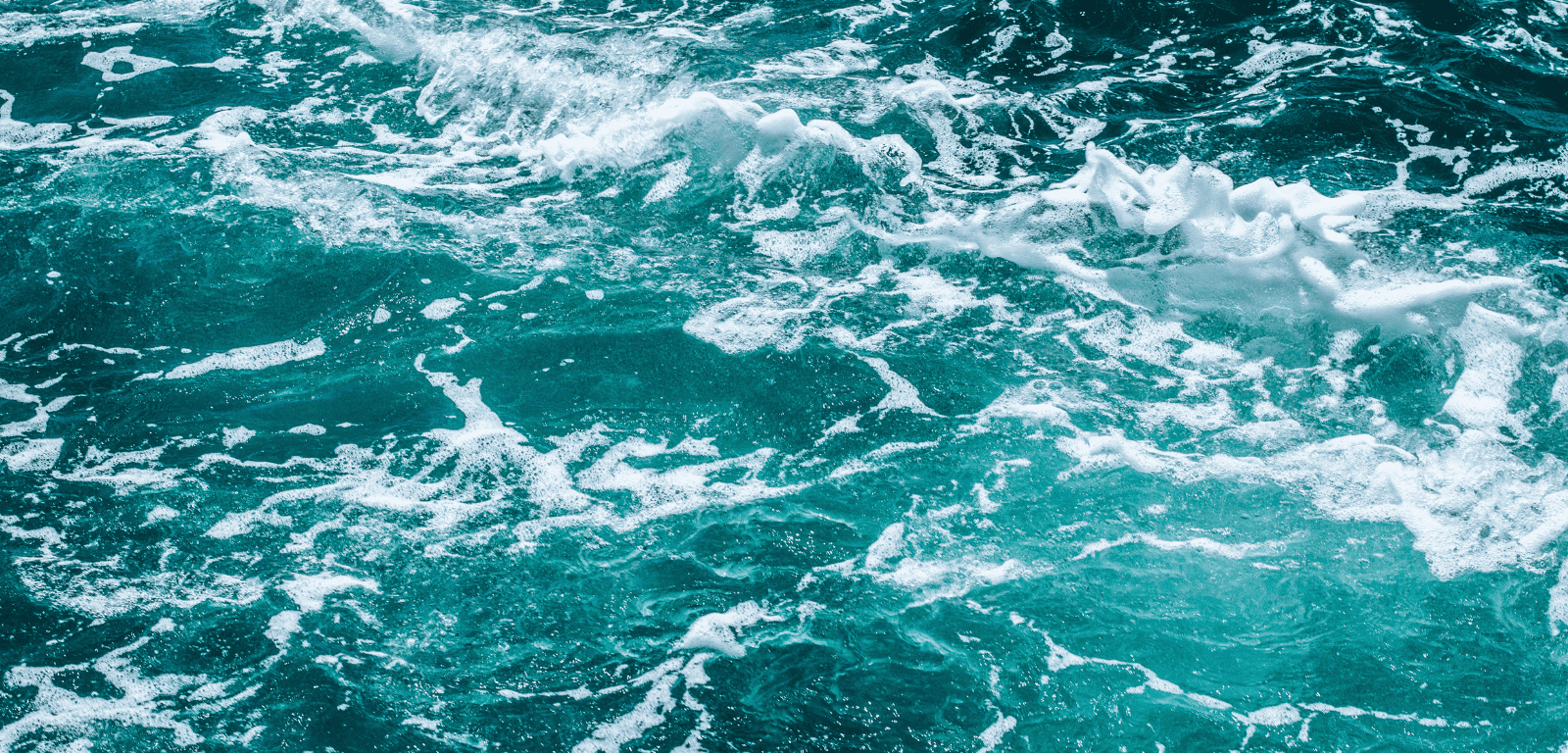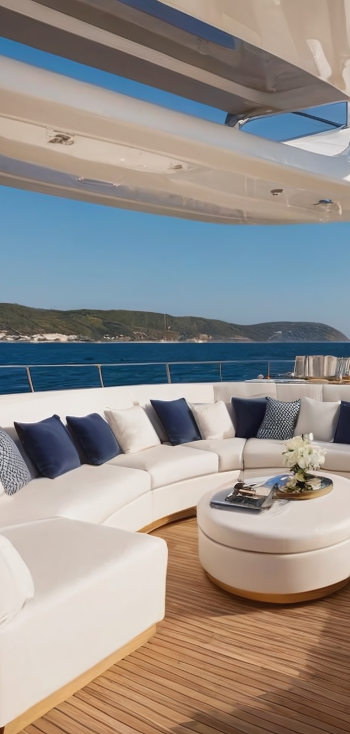

WHY FOAM MATTERS IN THE MARINE INDUSTRY: APPLICATION TIPS

In the maritime industry, from luxury yachts to commercial ferries, from offshore vessels to naval ships, comfort, safety, and material performance are critical. As ship interiors grow more sophisticated and regulations more demanding, polyurethane foam has emerged as a material of choice across a broad range of marine applications. While once reserved primarily for yacht interiors, PU foam is now a strategic asset throughout the nautical sector, thanks to its versatility, durability, and ease of customization.
The numbers reflect this growth: the global marine insulation foam market reached $1.5 billion in 2024.
APPLICATIONS: WHERE FOAM FITS ON BOARD
Polyurethane foam blocks are used throughout a vessel’s structure and interior, with each application benefiting from precise control over density and formulation:
- Cabin mattresses and cushions utilize soft to medium-density foam (30–50 kg/m³) for comfort and ergonomic support.
- Crew seating and high-traffic areas require denser foam (50–70 kg/m³) to ensure shape retention under intense, repeated use.
- Thermal and acoustic insulation, typically with closed-cell foam ≥70 kg/m³, is applied inside bulkheads, hull linings, and engine compartments to maintain interior climate, reduce heat exchange, noise and vibrations.
- Structural void fillers and flotation blocks leverage the foam’s buoyancy and dimensional stability in sealed compartments or life-saving systems.
- Drawers, cabinets, and tabletops can be coated with fiberglass and resin to create a smoother surface making foam a good alternative to wood, especially in environments with constant exposure to saltwater.
Foam’s role is also expanding in offshore infrastructure, where its resistance to water, compression, and temperature variations makes it ideal for modular platforms and subsea buoyancy.
Typical Density (kg/m³) | Marine Use Cases |
20–80 | Seating, mattresses, acoustic insulation |
30–100 | Thermal/acoustic insulation, impact protection |
50–80 | Bulkheads, insulation, floatation |
Variable | Filter applications, void filling, thermal bridging |
80–160 | Underlays, vibration damping, structural filling in furniture or compartments |
MATERIAL REQUIREMENTS: WHAT MAKES A FOAM “MARINE GRADE”?
The many uses of foam in the nautical sector are proof of its versatility, especially when produced in-house, and so customized. But what truly qualifies a foam as “Marine Grade”?
To be classified as “marine grade,” a PU foam must meet stringent technical criteria that go far beyond comfort. It must combine thermal insulation, buoyancy, resistance to harsh environmental conditions and compliance with IMO safety standards.
The most suitable formulations for marine use are either closed-cell polyurethane foams, which keep water uptake below 2 %, and thereby prevent moisture accumulation and long-term degradation, r very open-cell foams,, whose high permeability enables extremely fast drying, effectively eliminating the conditions in which mold and similar issues could develop. Marine grade foam must also withstand continuous exposure to salt spray, UV radiation, and mechanical stress, maintaining its structural integrity over time.
Given that much of the marine interiors market revolves around insulation, thermal stability is key, also in view of reducing HVAC load and improving energy efficiency. Equally important is the foam’s acoustic dampening capacity, which enhances onboard comfort by minimizing noise transmission from engines, or structural vibration.
Lastly, but critically, safety must be addressed. To be used in any vessel (especially in sleeping quarters and communal areas) PU foam must comply with a comprehensive framework of international regulations, such as low flammability, reduced smoke emission, and limited release of toxic gases.
COMPLIANCE WITH INTERNATIONAL REGULATIONS
Regulatory bodies across the globe play a pivotal role in determining what constitutes compliant and safe foam for marine use.
The most stringent regulation is represented globally by the SOLAS Convention (Safety of Life at Sea) and its IMO Fire Test Procedures (FTP) Code, which outlines the testing standards materials must meet to be approved for use on board. Specifically, Part 8, governs flammability of upholstery and soft furnishings aboard ships. To be used aboard, foam must pass tests on direct flammability, surface flame spread, and smoke toxicity under combustion conditions.
In addition, a major regulatory shift will take effect on January 1, 2026, with the enforcement of IMO Resolution MSC.532(107). This resolution introduces a permanent ban on the use and storage of any material containing PFOS (perfluorooctane sulfonate) and PFOA (perfluorooctanoic acid) — two fluorinated substances historically used in flame retardant treatments for PU foam. This will require manufacturers and shipowners to source only certified PU foams free of these banned substances, supported by official technical documentation issued by notified bodies.
Such evolving regulatory frameworks are pushing industry stakeholders toward continuous innovation, both to meet safety demands and to maintain competitiveness in the market. In this context, in-house foam production emerges as a highly strategic advantage, enabling full control over raw materials, formulation, and certification processes, while ensuring faster adaptation to regulatory updates and greater transparency throughout the supply chain.
WHAT BRIGHI BRINGS TO THE TABLE: MACHINE FOR IN-HOUSE FOAM PRODUCTION
Why depend on external supply chains, limited catalogs, or delayed deliveries, especially when every regulation, client request, or project timeline demands precision and speed?
In Brighi we studied a way to solve this challenge and giving marine manufacturers the tools to take full control of their production: our discontinuous foam production system (FP-400). “With the FP-400, your foam adapts to you, not the other way around’’ says Davide Enei, our foam product specialist.
By producing foam blocks directly in-house, shipyards, marine contractors and manufacturers gain complete control over density, block dimensions, and chemical formulations, tailoring every feature to the exact needs of onboard applications. This flexibility is strengthened by our continuous collaboration with leading raw material producers. For example, BASF developed a specific formulation as part of the CosyPUR 5286 foam family. This water-resistant formulation has been tested and refined on our FP-400 and then successfully launched on the market. In fact, unlike continuous systems, discontinuous block production offers the key ability to run small-scale tests and experimental batches before committing to full-scale production. This means users can fine-tune formulations, validate performance characteristics, and optimize output quality—saving time, reducing waste, and ensuring every foam block meets expectations before it hits the line.



